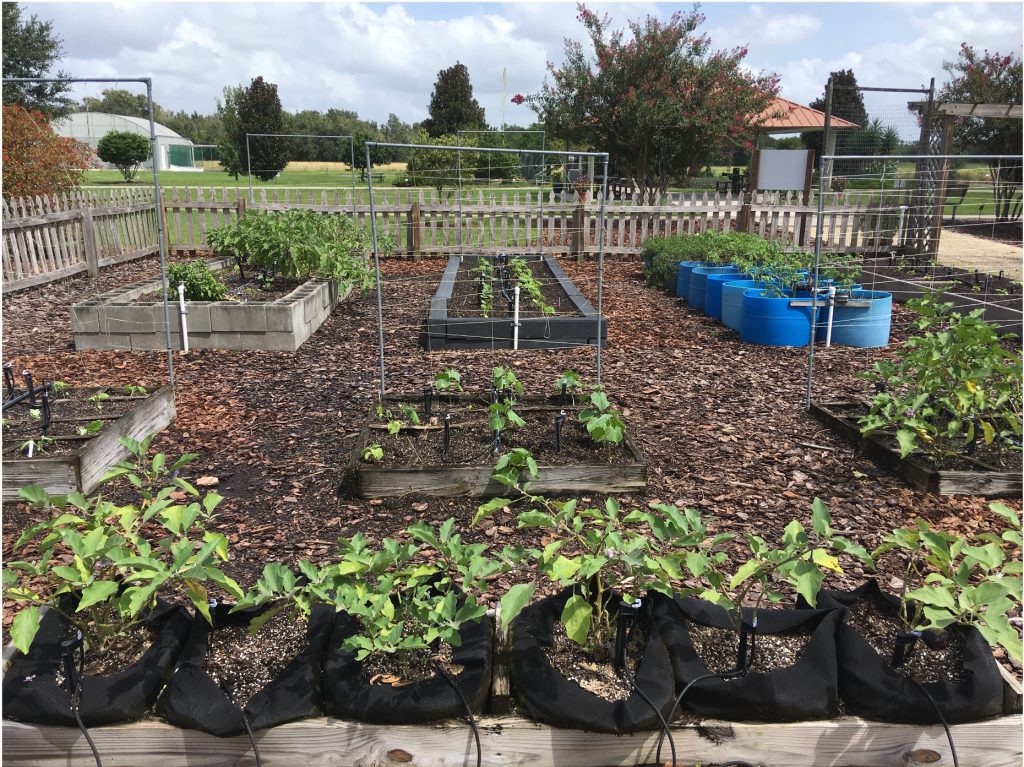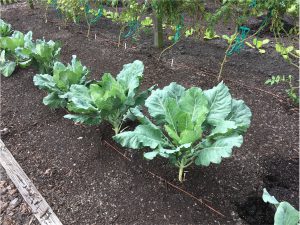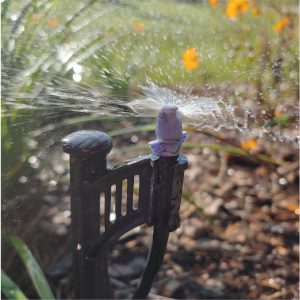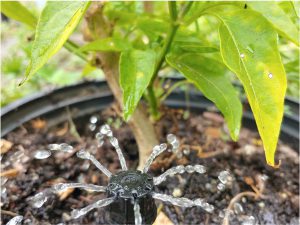Microirrigation is an efficient way to water vegetable gardens and conserve our precious water supply.

This goes along with Florida-Friendly Landscaping principle #2, Water Efficiently. Microirrigation is defined as a low volume, low flow system. These systems deliver water in gallons per hour, instead of gallons per minute as traditional overhead spray heads provide. Microirrigation delivers water to the root zone where plants need it, without wetting the foliage much, which can cause disease problems. The main types of microirrigation are drip line, micro sprays, and bubblers.

Drip Irrigation
Drip irrigation is also called drip line or drip tubing. In line drip tubing is ideal for row crops and in ground gardens. Depending on the type, emitters are spaced at 6, 9, 12, 18, or 24″. Dripline has a low flow so usually requires a long run time, perhaps 30 minutes per irrigation cycle.
Determine how long to run your drip irrigation system with this helpful publication from Penn State. https://extension.psu.edu/determining-how-long-to-run-drip-irrigation-systems-for-vegetables.
Microsprays

Microsprays come in many types, including micro jets, misters, spinners and micro sprinklers. The mini spray head is typically clipped to a stake or riser. Some features of micro sprays include:
Another great EDIS publication on growing vegetables is the Florida Vegetable Gardening Guide https://edis.ifas.ufl.edu/publication/VH021.
Want to learn more? Check out horticulture classes offered by UF/IFAS Extension Orange County at www.ocextension.eventbrite.com. Read about Florida-Friendly Landscaping™ at https://ffl.ifas.ufl.edu/. Follow us on Facebook https://www.facebook.com/GardenFlorida/ and Instagram https://www.instagram.com/oc_extension/, and visit our website at https://sfyl.ifas.ufl.edu/orange/home-lawns-landscapes-and-gardens/florida-friendly-landscaping/.
 3
3

